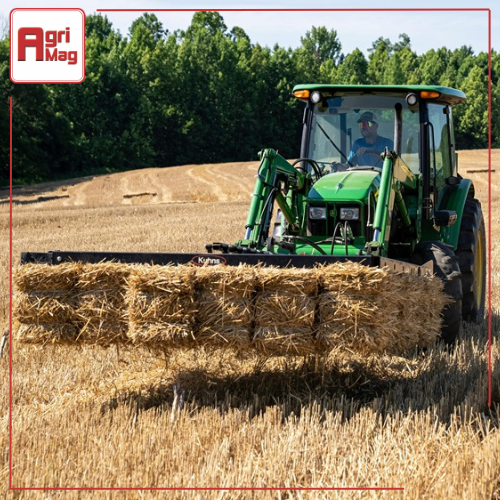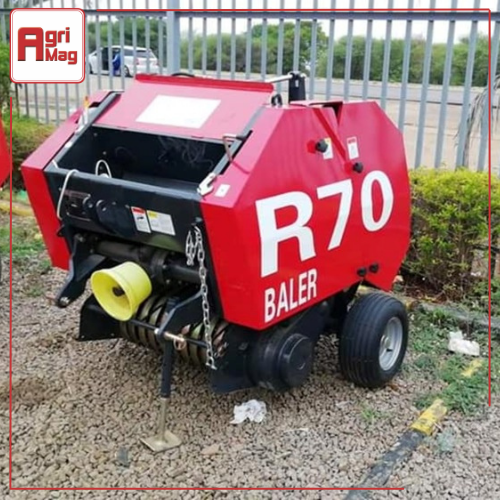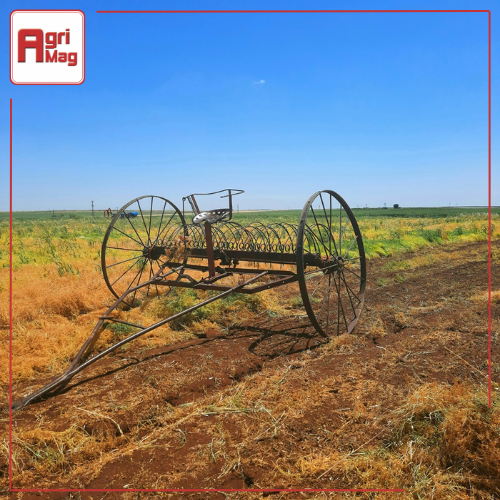
Understanding Haymaking and Silage Practices in South Africa
Date: 13/02/2023
In the agricultural landscape of South Africa, haymaking and silage play vital roles in ensuring the availability of nutritious fodder for livestock. These practices involve preserving and storing forage crops for future use, especially during times of scarcity. Let's delve into what haymaking and silage entail, their importance, and their impact on the farming community in South Africa. Interested in buying farm equipment? Visit AgriMag to find the right equipment that suit your requirement and needs.

What is Haymaking?
Haymaking is the process of cutting, drying, and storing grass or legumes to be used as animal feed. In South Africa, haymaking is commonly practiced in regions with favorable climates for growing grasses and other forage crops. Farmers typically harvest hay during the dry season when grasses have matured and moisture levels are low enough for efficient drying.
Methods of Haymaking
Farmers use various methods to make hay, including mowing, tedding, raking, and baling. After mowing the grass, it is left to dry in the field, often turned periodically to promote even drying. Once the moisture content reaches an optimal level, typically below 15%, the hay is baled and stored in sheds or barns for future use. Proper storage is crucial to prevent spoilage and maintain the nutritional quality of the hay.
Importance of Haymaking
Haymaking plays a crucial role in South African agriculture for several reasons:
1. Fodder Security: By making hay, farmers ensure a reliable supply of feed for their livestock, especially during periods of drought or when fresh pasture is scarce.
2. Nutritional Value: Well-made hay retains much of the nutritional value of fresh forage, providing essential nutrients such as carbohydrates, protein, and minerals to livestock.
3. Flexibility: Haymaking allows farmers to harvest excess forage and store it for future use, providing flexibility in managing grazing lands and optimising feed resources.
What is Silage?
Silage is a fermented fodder made from green forage crops, primarily grasses and maise, preserved through anaerobic fermentation. In South Africa, silage is a popular method of conserving surplus crops for feeding livestock, particularly dairy and beef cattle.
Methods of Silage Making
The process of making silage involves chopping the forage into small pieces, packing it tightly into a silo or pit, and sealing it to exclude air. This anaerobic environment promotes the growth of lactic acid bacteria, which ferment the sugars in the forage, lowering the pH and preserving the feed. Silage can be made from various crops, but maise silage is particularly common due to its high energy content and suitability for fermentation.
Importance of Silage Making
Silage offers several benefits to South African farmers:
- Preservation of Nutrients: Silage making preserves the nutritional quality of forage crops, retaining vitamins and minerals that may be lost during other preservation methods.
- Year-round Feeding: Silage provides a valuable source of feed during periods of scarcity, such as winter months when fresh pasture is limited.
- Efficient Use of Surplus Crops: Silage making allows farmers to utilise surplus crops, reducing waste and maximising the productivity of their land.

Challenges and Innovations of Haymaking and Silage in South Africa
While haymaking and silage are essential components of livestock farming in South Africa, they come with their own set of challenges. These challenges include unpredictable weather patterns, labor-intensive processes, and the need for appropriate storage facilities. However, farmers are constantly innovating to overcome these challenges and improve the efficiency of haymaking and silage practices.
One such innovation is the use of modern machinery and equipment, such as hay balers and silage harvesters, which streamline the harvesting and storage process, reducing labor requirements and improving overall efficiency. Additionally, advancements in forage genetics and agronomy have led to the development of high-yielding varieties that are better suited for haymaking and silage production, ensuring a reliable supply of quality feed for livestock.
Furthermore, farmers are adopting conservation agriculture practices, such as minimum tillage and cover cropping, to improve soil health and moisture retention, thereby enhancing the productivity and sustainability of forage crops.
Future Outlook
As South Africa continues to face challenges related to climate change, water scarcity, and food security, the role of haymaking and silage in agriculture is expected to become even more critical. With the adoption of innovative technologies and sustainable farming practices, farmers can overcome these challenges and ensure the long-term viability of their operations.
Government support and investment in research and development are also crucial to drive innovation and promote the adoption of best practices in haymaking and silage production. By working together, farmers, researchers, and policymakers can ensure the continued success of haymaking and silage in South Africa, supporting the livelihoods of rural communities and contributing to the nation's food security.
In conclusion, haymaking and silage are indispensable practices in South African agriculture, ensuring the availability of nutritious fodder for livestock throughout the year. By making hay and silage, farmers can mitigate the effects of seasonal fluctuations, enhance the resilience of their operations, and sustainably manage their resources. As integral components of modern farming systems, haymaking and silage in South Africa contribute to the productivity, profitability, and sustainability of agriculture. Are you looking to purchase farm equipment? To locate the ideal equipment for your needs and requirements, visit AgriMag.
Categories:
Common category
Category Search:
Latest articles:

Top Irrigation Tips for Farmers Facing Water Restrictions

Understanding the Role of Truck Tractors in Logistics

Farming Equipment Upgrades for Small-Scale Farmers in South Africa


